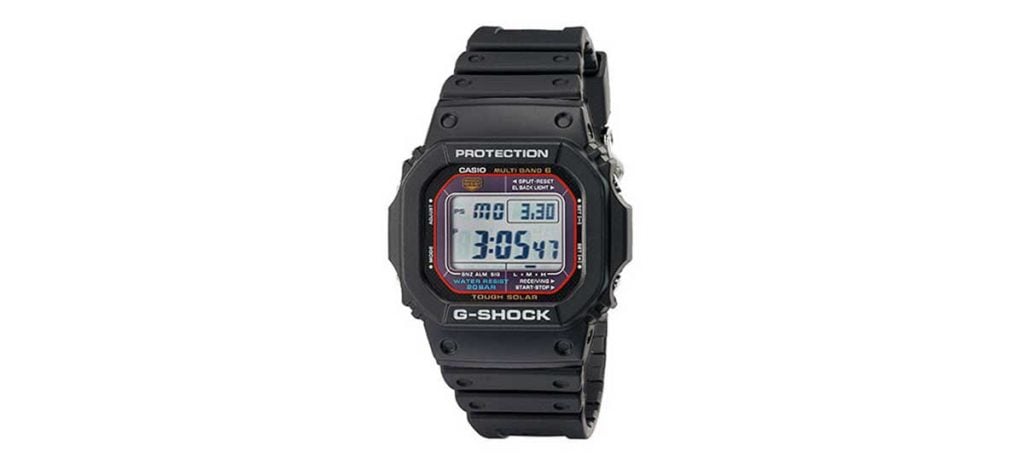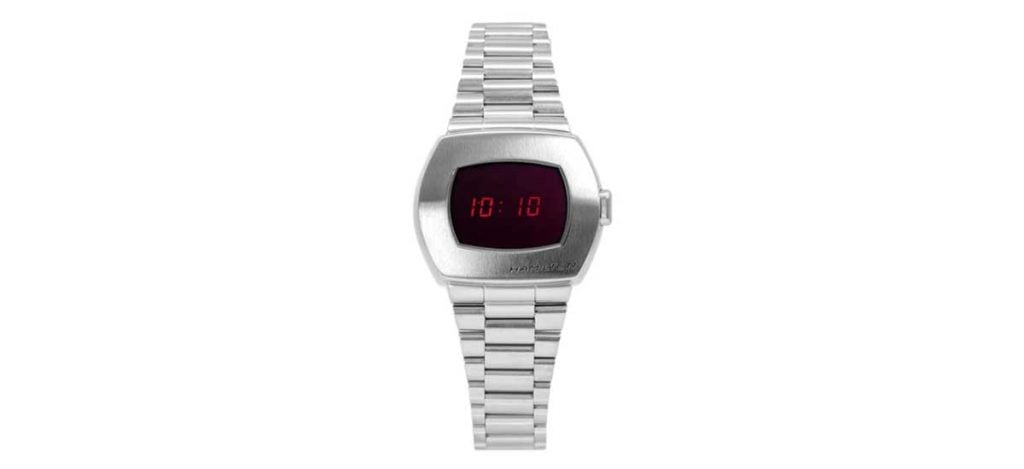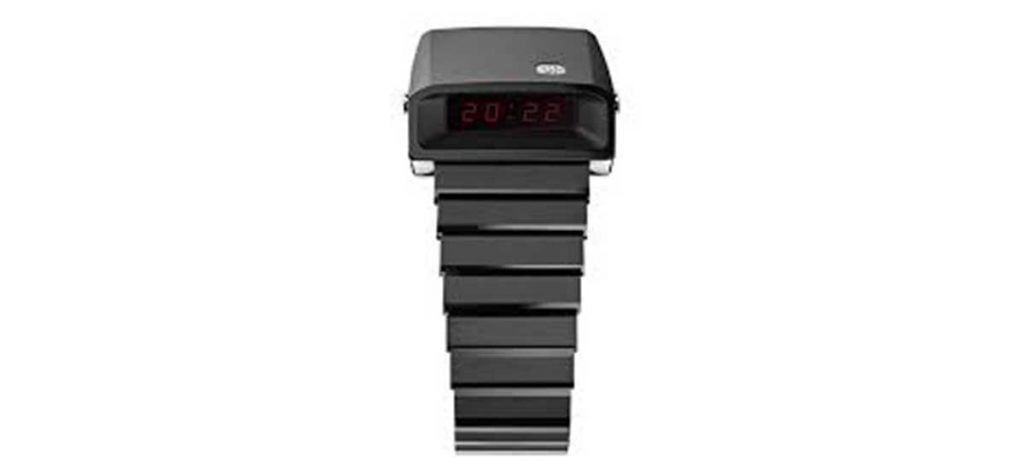
The symbiotic relationship between motorcars and wristwatches has been observed since the penultimate turn of the century. Cars were replacing horses around about the same time pocket watches were slipping out of long coats and onto the wrist.
While both machines were tooled for a purpose, the most sought-after modern evolutions serve as harbingers of passion and laborious luxury. At Hublot, that luxury isn’t as subtle. The MP-05 is the brand’s latest tribute to Ferrari’s hybrid holy grail that ditches standard automotive complications for one hell of a centerpiece.
About The Hublot MP-05 LaFerrari
To understand the MP-05 LaFerrari, it’s best to tilt your skull and knock out all preconceived notions of what a mechanical watch is supposed to look like. Did you think of a timepiece with at least two lines of symmetry? Not here. What about hands? Shouldn’t they be clearly defined and sweeping? If you were born in 1812, sure. Uh, does it tell the time? That it does, but if you’re buying this watch, you won’t be looking at the time.
The MP-05 adopts a trapezoidal curved case of considerably large – and quite frankly uncouth – dimension. It’s neither smooth nor flat, with galea-like embellishments that start at the top where such a piece might sit and trickle down its sides towards the base.
The case, available in titanium, ceramic, or sapphire, looks nearer to a museum display than a traditional watch case, unveiling a central dimension of viewing beyond the normal scope. What’s all this clear real estate, you ask? Simply put, the heart of Ferrari.
To wrap your head around the movement, it’s better to think of a miniature model of Ferrari’s LaFerrari V12. Further, this particular V12 ditches gas for spring-loaded inertia, and instead of generating power and torque, it produces time. Oh, and it’s got a tourbillon.
Curiously, though, it’s not an automatic, instead using a hand-wound movement as the driving force for this engine. I say it’s curious because if we stop for a second and look at the significance of the LaFerrari, it’s the amalgamation of modern technology that can contain such brutality in a user-friendly package.
I don’t know about you, but winding a non-dress watch every morning doesn’t bode well with the life of a worry-free billionaire. In the midst of all the craziness, there’s a Ferrari embroidered rubber strap that incorporates much of the prancing horse’s interior piping and stitching design, so there’s no doubt that while it may say Hublot, it’s really another Ferrari.
History Of Hublot And Ferrari Collaborations
Considering that Hublot hasn’t been around long enough to broker multi-year relationships in motorsport, it’s made quite a splash with Ferrari. The Italian automaker’s relationship with Hublot is one for the tabloids. It’s proof that Ferrari’s poor decisions in strategy were consistent off the track.
Nevertheless, Hublot and Ferrari found each other deep in one another’s eyes in 2011, following a deal that would tie every facet of Ferrari’s racing divisions to Hublot’s hip. Members of Scuderia’s GT3 team brandished Big Bangs as much as Sebastien Vettel did.
Baselworld 2012 debuted the partnership with a Hublot flagship with an Italian twist – the Big Bang Ferrari. A genuinely important watch for the brand on its own, the ‘generic’ Big Bang raged against the critics of its machine with an adopter of its first in-house movement, the UNICO.
Ferrari’s imitation saw a multi-dimensional prancing horse in place of an hour totalizer or small seconds sub-dial. In fact, neither of those functions that make up ⅔ of a traditional chronograph are there.
You do get a minute’s chronograph dial and seconds chronograph hand, though, for your trouble. In all honesty, it wasn’t the greatest achievement between a legendary race team and a watchmaker, even in its musings in yellow gold or titanium.
Sitting in Ferrari’s mid-engined V8 at the time, you could see fragments of the dash and the seats subtly woven into the face, but for whatever reason, it never gelled with me. It had this urging sense of boy racer tackiness, only made worse by the Big Bang’s visible date ring.
A year later, though, we got a big boy watch for a big boy brand. The MP-05 LaFerrari exalted its automotive namesake with a skeletonized movement inspired by the car’s honking V12 power plant.
Released first in brushed titanium, the MP-05 has seen re-releases in other materials and highlighting accents in the years since its inception. The most impressive of which came in 2017 with the MP-05 LaFerrari Sapphire.
For those of you who aren’t the keenest gas guzzlers, let’s get you up to speed on the jewel of the holy trinity on which this Hublot is based. The Ferrari LaFerrari. It’s best to ignore the flagrant obviousness of its rather unimaginative title.
It was designed to represent a distilled thoroughbred racehorse – from another dimension. Its shape was an imposition to the delicate Ferrari, relying on fierce air to mold most of its body. Its eager face, both grinning and gulping, foreshadowed an untamed rage well before any arousal of its power.
And goodness me, there was power. Fifty shy of a thousand horses and a satan-invoking derivation of torque. All that from a 6.3L naturally aspirated V12 that’s further injected with an electric motor. And a KERS system for regenerative braking plucked straight from F1’s hybrid era.
Basically, it’s the most complicated Ferrari ever surmised. And, like it or not, the MP-05 is worthy of respect for its interpretation of this unrelenting, unprecedented machine.
Hublot MP-05 LaFerrari: In-Depth Review
Now that you’ve got a baseline on what we’re looking at here, I’d say it’s about time to get a little nerdy. In our breakdown, we’ll go through specifications and references that have popped up in the model’s lifetime, and I’ll try to give you some closing thoughts on what I think it’s worth to the industry beyond its market appraised value.
Case
To date, four case offerings exist. The launch variant in brushed titanium, a further Hublot ‘All Black’ titanium coated in black PVD, an even more limited gold, and a final hurrah in sapphire. If you thought working with titanium was hard, the latter sapphire would prove to be a completely different ball game. But we’ll get to that later.
The case in all model variations measures 45mm across. It’s a towering thing, too, with thickness coming in around the 17mm marking. The Sapphire’s makeup, in particular, is slightly different from the rest of the watches, displaying Ferrari’s prancing horse motif at the top of the case while the others are empty.
Dial
El visage, as it were, is hardly visible, nor is it the focal point of this piece. Beneath the barrels and gears, there is a flattened surface that matches the makeup of each selected case. It’s just there as a grounding base for your viewing pleasure.
Movement
Not only is the movement an eclectic centerpiece for its automotive composition, it’s also a world record holder. Still unbeaten today, the HUB9005 manual-wound movement arms 11 spring-loaded barrels and a suspended vertical tourbillon to fire up a 50-hour power reserve. The tourbillon is housed in an independent cage and can be spun up by a Hublot’s miniature torque gun. How’s that for an F1 tribute?
Strap
The strap is humbling in the face of the MP-05’s greatness. It’s a textured rubber thing without much going on, really. In the Sapphire, though, things are a little different. Lanes are grooved into the rubber akin to Ferrari’s Tailor-made seat design.
Should You Buy A Hublot MP-05 LaFerrari?
If you don’t have a LaFerrari, your own bank vault, and a financial position strong enough to get one and never find a market to sell it, most would argue no. It retailed at $338,570 and trades at around $500,000 these days, so it’s not the best investment in the world.
Plus, most people hate it. One because it’s a Hublot. And two, because to traditionalists, it’s borderline offensive in its in-your-face abhorrence than its movement can make up for. For me, it’s a symbol of innovation and deserves admiration for venturing into an unknown where only criticism was a guarantee.
Horology, at times, is ruined by the pedantic, those who view the rules of the past as the rules of the future. The MP-05 crumpled up the rules and journeyed into the fray, just as the LaFerrari did with the hybrid. And as far as I’m concerned, it came out on top.
Conclusion
For whatever you think of Hublot and its escapades, it’d be criminal to dispose of the MP-05’s excellence in watchmaking. It’s not classic or by any means beautiful, but it philosophizes a sublime watch movement—which is to say, an incredibly complex thing engineered for some simple outcome.
Where traditional movements worth talking about seek out difficulty in perpetual calendars and other functions nobody short of Christopher Colombus would find useful, the MP-05’s flying tourbillon mimics the motion of an actual engine through pushers, gears, and a disruptive approach to tradition.












